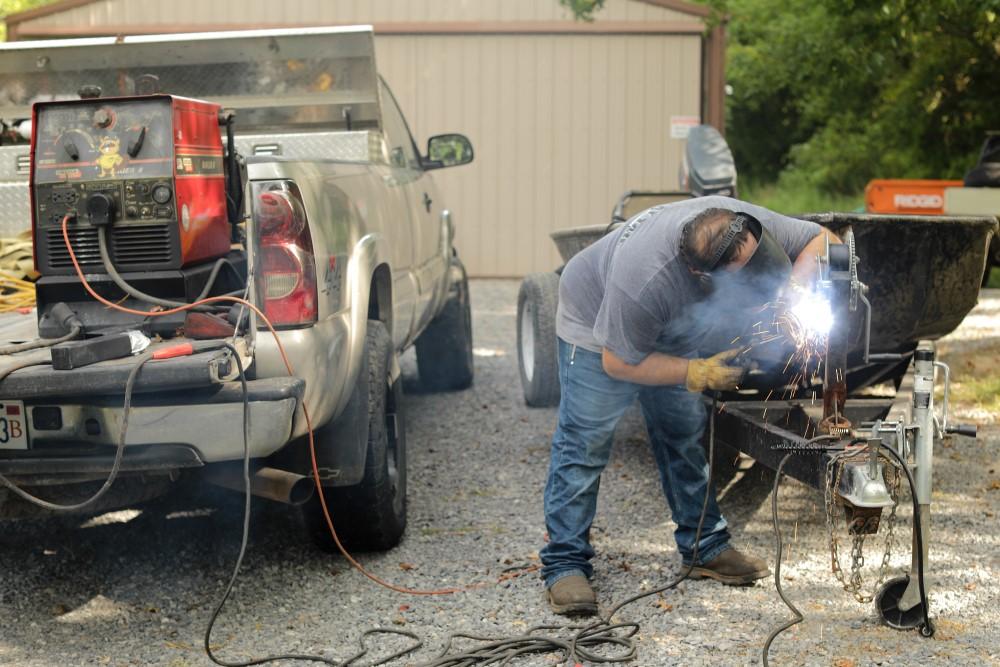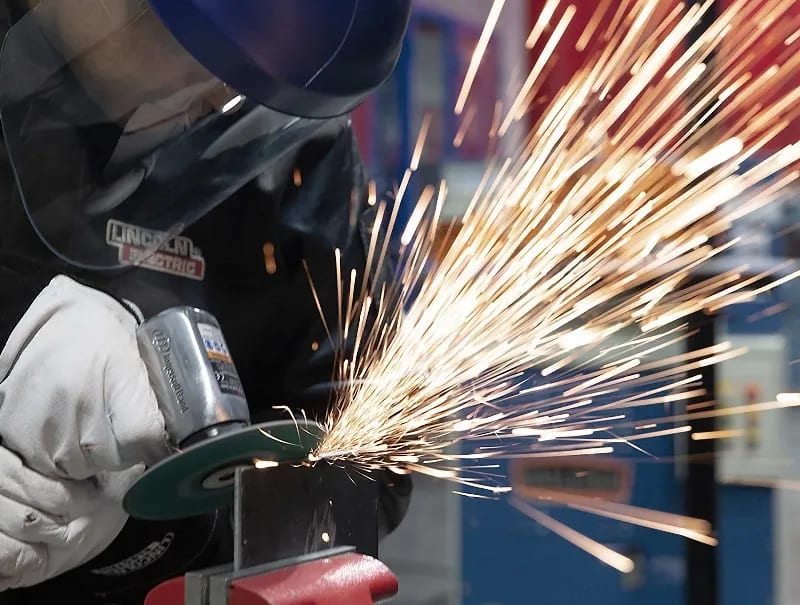Everything about Welding: Secret Insights Into Techniques and Finest Practices for Success
Welding includes a range of methods, each suited for certain products and applications. Recognizing these methods, such as GMAW, SMAW, and TIG, is vital for achieving excellent outcomes. The appropriate devices and security practices can not be ignored. As prep work and repairing play crucial functions in the welding process, understanding these components can greatly boost the quality of the last item. What are the crucial variables that ensure an effective weld?
Recognizing Different Welding Methods
Welding methods encompass a selection of approaches, each suited to details applications and products. Among the most typical methods are Gas Metal Arc Welding (GMAW), Shielded Steel Arc Welding (SMAW), and Tungsten Inert Gas Welding (TIG) GMAW, also called MIG welding, is preferred for its rate and adaptability, making it excellent for thin products. SMAW, or stick welding, is favored for its simplicity and performance in outside environments, especially with thicker metals. TIG welding supplies accuracy and control, making it ideal for intricate job and non-ferrous metals (Montana Mobile Welding and Repair Welding). Each strategy has its one-of-a-kind benefits and factors to consider, permitting welders to choose the very best method based on the project's demands, material kind, and preferred outcomes. Understanding these methods is vital for effective welding
Vital Welding Tools and Tools
While different welding methods require details skills, the appropriate equipment and devices are similarly vital for attaining quality results. Crucial welding equipment includes welding equipments, which differ depending on the method-- such as MIG, TIG, or stick welding. Safety equipment, consisting of aprons, handwear covers, and helmets, guarantees safety and security and convenience throughout the process. Additionally, components and clamps aid protect products in location, guaranteeing accuracy in welds. Consumables like welding poles, cord, and shielding gas are likewise vital components that affect the high quality of the weld. Devices such as grinders and cutters help with surface preparation and post-weld ending up, adding to a professional outcome. Purchasing top quality equipment ultimately improves the efficiency and effectiveness of welding projects.
Safety Practices in Welding
Correct safety and security techniques are important in the welding industry to shield employees from potential risks. Welders must put on proper individual safety devices (PPE), consisting of headgears with correct shading, handwear covers, and flame-resistant garments. Sufficient air flow is crucial to reduce exposure to harmful fumes and gases generated throughout the welding process. In addition, workers ought to be educated in the correct handling of welding tools to avoid accidents. Fire precaution, such as keeping combustible materials away from the welding area and having fire extinguishers conveniently offered, are necessary. Regular evaluations of tools and offices can aid determine possible threats before they result in crashes. By adhering to these safety and security practices, welders can produce a safer working atmosphere and lessen threats related to their profession.
Preparing Products for Welding
Preparing products for welding is a vital action that greatly affects the top quality and integrity of the last product (Fabrication). Proper preparation includes cleaning up the surfaces to eliminate impurities such as dirt, oil, and rust, which can compromise the weld. Methods such as grinding, fining sand, or making use of solvents are commonly utilized to achieve a clean surface. In addition, ensuring that the materials fit with each other well is essential; voids can cause weak welds. It's likewise essential to consider the positioning and positioning of the elements, as this will certainly impact the simplicity of welding and the last end result. Picking the proper filler product and making sure compatibility with the base metals is crucial for accomplishing solid, durable welds.
Tips for Achieving High-Quality Welds
Attaining premium welds calls for attention to detail and adherence to finest methods throughout the welding procedure. Proper joint preparation is crucial, making sure surfaces are clean and complimentary from contaminants. Selecting the suitable filler material and welding technique based on the base steels is vital for ideal bonding. Maintaining constant traveling rate and angle while welding can stop defects and promote uniformity. In addition, regulating heat input is essential; extreme warm can bring about warping and compromised joints. If required, regularly evaluating the welds throughout the procedure permits for prompt changes. Ultimately, using proper post-weld treatments, such as cleansing and tension alleviation, can boost the sturdiness and integrity of the weld, eventually ensuring a successful outcome.
Fixing Typical Welding Issues
Welding commonly presents challenges that can impact the quality and honesty of the end product. Common concerns such as porosity, irregular weld grains, and overheating can develop, each needing particular repairing methods. Comprehending these troubles is necessary for welders to improve their abilities and achieve suitable outcomes.
Porosity Issues Explained
Although porosity can usually be neglected, it remains an essential discover here issue in welding that can compromise the integrity of a completed product. Porosity describes the visibility of tiny gas pockets within the weld bead, which can compromise the joint and lead to early failure. This problem typically occurs from impurities, moisture, or improper securing gas insurance coverage during the welding procedure. To reduce porosity, welders need to verify that the base materials are tidy and completely dry, use suitable protecting gases, and maintain regular welding parameters. Frequently inspecting the tools and environment can also help recognize prospective problems prior to they show up in the weld. Dealing with porosity successfully is important for accomplishing solid, sturdy welds that satisfy high quality requirements.

Irregular Weld Beads
Irregular weld grains can greatly influence the quality and toughness of a completed product. Numerous factors add to this problem, including inappropriate traveling speed, incorrect amperage setups, and irregular electrode angles. When the welder moves too promptly, a bead might appear slim and lack infiltration, while moving also gradually can cause Learn More Here extreme buildup. Additionally, using the wrong amperage can lead to either damaging or extreme spatter, both of which concession weld honesty. The welder's method, such as inconsistent lantern movement, can also result in uneven grain look. To minimize these issues, welders ought to concentrate on keeping constant, controlled motions and ensuring correct equipment settings to attain harmony in their welds. Uniformity is essential to achieving solid and trusted welds.
Overheating and Warping Issues
Too much warm during the welding procedure can result in substantial overheating and warping issues, influencing the architectural stability of the workpiece. These problems commonly materialize as distortion, which can jeopardize positioning and fit-up, making further assembly testing. Variables adding to overheating include the selection of welding parameters, such as voltage and travel speed, in addition to the type of material being welded. To alleviate these issues, welders ought to maintain consistent travel rate and proper heat input while keeping an eye on the work surface temperature level. In addition, pre-heating or post-weld warm treatment can aid ease anxieties triggered by rapid cooling - Belgrade Welding. Regular evaluation and adherence to ideal methods are important in protecting against overheating and guaranteeing the durability and reliability of bonded frameworks
Regularly Asked Concerns
What Are the Career Opportunities in the Welding Sector?
The welding sector offers varied job opportunities, including placements as welders, assessors, designers, and teachers. Specialists can function in manufacturing, building, aerospace, and automobile sectors, benefiting from solid need and affordable wages in various functions.
Exactly How Can I Improve My Welding Speed Without Giving Up Top Quality?
To boost welding rate without compromising high quality, one ought to practice effective strategies, keep tools, optimize setups, and improve hand-eye coordination. Regular training and seeking feedback can also greatly add to achieving faster, high-grade welds.
What Certifications Are Offered for Welders?
Numerous accreditations exist for welders, including those from the American Welding Culture (AWS), the National Facility for Building And Construction Education And Learning and Research Study (NCCER), and different industry-specific organizations. These credentials boost employability and show skill efficiency.
Exactly How Does Welding Impact the Features of Metals?
Welding affects the residential properties of steels by altering their microstructure, which can cause changes in stamina, solidity, and ductility. Warmth input and air conditioning rates during the procedure greatly affect these product attributes.
Can I Weld Dissimilar Metals Together?
